I’m referring, of course, to:
Saint John of Damascus
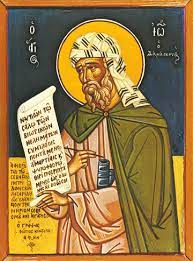
icon courtesy of Saint Isaac’s Skete at skete.com
To begin, I’m sorry this Post is two days late. Last week was just chaotic, and I couldn’t get to it. I don’t think I’ve ever failed so miserably, except when I was hospitalized. I am aware that you (and possibly the whole world?) base your calendar on my getting a Post out every Friday.
Oh, I do hope I haven’t set the cosmic clock out of kilter. * I’m publishing this now, late on Sunday evening, ready or not. Be patient with errors and misspellings. I’ll check for them in the morning.
- I trust you know I’m being silly, A Lutheran friend of mine asked me it was really proper for a priest to exhibit a silly sense of humor. I told her: “Proper or not, without it I don’t think I ever could have survived 83 years.” Like last week, for example.
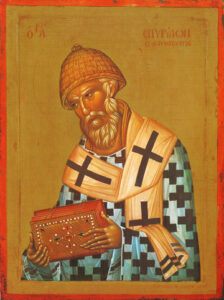 However, I am just on time to urge you to read about Saint Spyridon (December 12), one of the Church’s most fascinating saints: https://frbillsorthodoxblog.com/2019/12/06/156-saint-spyridon-a-much-traveled-saint/
However, I am just on time to urge you to read about Saint Spyridon (December 12), one of the Church’s most fascinating saints: https://frbillsorthodoxblog.com/2019/12/06/156-saint-spyridon-a-much-traveled-saint/
Now, to get to the subject of the day: In this Post we’re to play with time some more and go back eight days – to December 4, the feast day of Saint John of Damascus.
“How could John serve a high post under one of these Muslim terrorists?” I hope you’re not asking that question, but these days one never knows. So just in case…
Are Muslims terrorists?
As I read the news, it seems some people think they all are. Some Muslims most definitely are terrorists. But they are proportionally very few, and the vast majority of Muslims, at least in America, are mortified by what those few are doing to the reputation of Islam.
Statistics about American Muslims
These are from Pew Research, one of the most trusted surveyors of opinion, in 2017.
“82% of Muslims said they are either ‘very’ (66%) or ‘somewhat’ (16%) concerned about extremism in the name of Islam around the world”. while, 83% of Americans overall fear Muslim terrorism around the world.
“Although both Muslim Americans and the U.S. public as a whole overwhelmingly reject violence against civilians, Muslims are more likely to say such actions can never be justified. Three-quarters of U.S. Muslims (76%) say this, compared with 59% of the general public.”
“Similar shares of Muslims (12%) and all U.S. adults (14%) say targeting and killing civilians can ‘often’ or ‘sometimes’ be justified.”
 Summary: Regarding terrorism, American Muslims have the same opinions as the rest of us, except they are considerably less tolerant of violence against civilians.
Summary: Regarding terrorism, American Muslims have the same opinions as the rest of us, except they are considerably less tolerant of violence against civilians.
To take a different approach: Here in our almost-exurban suburb, I’ve not known many Muslims. However, my pharmacist Muhammad is one of the kindest, most helpful guys I know. He always greets me with a big friendly smile: “Hello, Mr Olnhausen”. (I’ve not told him I’m a priest.) I greet him: “Good morning, Mr Ibrahim.” He wishes me “Merry Christmas”, and I wish him a “Blessed Ramadan”. I asked him if I could mention him in my Blog. He gave me an even bigger smile, said, “Yes, of course!”, and shook my hand vigorously.
Likewise, a local Muslim restauranteur and I got into a conversation about the awful state of the world, and he concluded: “Everything will be alright when Jesus returns.” I didn’t know how to top that!
There have been times and places in history when Muslims have been less tolerant, as there certainly have been with Christians. Quite recently there was an attempt to prevent all Muslims from entering the United States. I think the Crusaders could be would be definitely labelled anti-Muslim. Today public Christian worship in Saudi Arabia (an American ally) will result in imprisonment, lashing or deportation, and I don’t need to tell you about Isis. (It’s not today’s subject to mention Queen Elizabeth I of England beheading Roman Catholics, but nevertheless worth remembering. And I’d hate to think how many Muslims have killed each other, Sunni against Shia.)
I wish and pray we could all be tolerant of each other and love one another, but the fact is that these things come and go, everywhere. In Eighth Century Damascus, Christianity was tolerated, and Christians lived in peace.
Saint John of Damascus
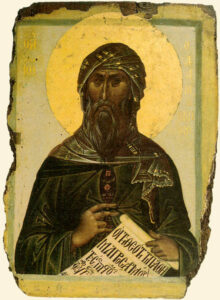
John was born in the year 675, about 40 years after Byzantine Jerusalem had fallen to the Arab Muslims.
Little is known of his childhood, except that he had a foster brother, Cosmas. The boys were educated together by an elderly Sicilian monk. John and Cosmas became close. Like John, Cosmas in time became a monk and composer of many hymns still sung in the Orthodox Church. He is now known as Saint Cosmas of Maiuma. But his is another story.
Mount Athos, 14th c
John’s grandfather had served in a high office in Damascus under the Byzantines. Apparently it was a kind of “hereditary civil service job”, which was passed down to John’s father, who kept the same post under the new Arab caliphate, and which John likewise inherited. 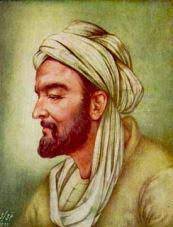
Caliph Abu al- Malik, reigned AD 685-705
Why did they not resist the Muslim conquerers? Their last name “Mansur” probably explains it. That’s an Arabic name, not Greek Byzantine. Middle Easterners had little love for the Byzantines with their complex, oppressive authority system and excessive taxes, so probably John hoped that the Muslim Arabs would be friends and bring relief *, even if they weren’t Christians. Or were they? (Keep reading.)
- Old saying: “Follow the money.”
John was a brilliant scholar, excelling in music, astronomy and particularly theology. We Orthodox consider him the last of the early Church Fathers. He also was a brilliant hymnographer, and later a holy monk.
But first we come to an even more unlikely part of this story. John lived at the time of the rise of Iconoclasm in the Byzantine Empire under Emperor Leo the Isaurian. Icons were being removed from 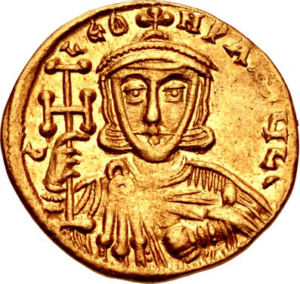 churches and taken down from public places and burnt or chopped to pieces. People were even forbidden to keep them in their homes. In time there were many exiles and even martyrs. Why? That’s a good question. The reason was never explained. The theology given was that they were forbidden by the Second Commandment.
churches and taken down from public places and burnt or chopped to pieces. People were even forbidden to keep them in their homes. In time there were many exiles and even martyrs. Why? That’s a good question. The reason was never explained. The theology given was that they were forbidden by the Second Commandment.
For an analysis of that shallow argument against icons, you might go to: https://frbillsorthodoxblog.com/2019/03/29/112-the-icon-part-two-iconoclasm-the-seventh-council-and-after-that/
However, from Muslim Damascus, the Caliph allowed John to write in defense of the holy icons: Apologetic Treatises against those Decrying the Holy Images. These were then smuggled into the Byzantine Empire. (I would guess this was done with the Caliph’s help, for though as a good Muslim he did not approve of icons, he surely he enjoyed allowing John to throw spears at Emperor Leo and drive him crazy!)
Two very short samples of Saint John’s profound defense of icons:
“In former times, God, who is without form or body, could never be depicted. But now when God is seen in the flesh conversing with men, I make an image of the God whom I see. I do not worship matter; I worship the Creator of matter who became matter for my sake, and deigned to inhabit matter, who worked out my salvation through matter. I will not cease from honoring that matter which works my salvation. I venerate it, though not as God.”
“If a pagan asks you to show him your faith, take him into church and place him before the icons.”
Leo fought back. He had someone write a plot against the Caliph, then forge John’s signature to it, and had that smuggled back to the Caliph. (This would make a great TV drama, wouldn’t it!) The Caliph believed it was authentic, for he knew John’s hand writing, so he had his writing hand cut off.
 I always suspected this was only legend. I thought he immediately would have bled to death. So I researched it. The answer is: not necessarily, if there is immediate medical care, and in that regard Middle Eastern Muslims were far more advanced than the Christians to the West. So, as the story goes, the Mother of God appeared to John during the night and restored his hand. The Caliph was so moved by this that he understood John’s innocence, and restored him to his position.
I always suspected this was only legend. I thought he immediately would have bled to death. So I researched it. The answer is: not necessarily, if there is immediate medical care, and in that regard Middle Eastern Muslims were far more advanced than the Christians to the West. So, as the story goes, the Mother of God appeared to John during the night and restored his hand. The Caliph was so moved by this that he understood John’s innocence, and restored him to his position.
courtesy of Saint Elisabeth’s Convent, Minsk, Belarus. Why does the Theotokos get three hands? I don’t understand.
P.S. Please see the first comment at the end of this Post, where Valery tells us where to find the answer. Thanks, Valery.
John also was greatly moved by this event, and he decided to withdraw from the world. He became a monk and was ordained priest at Saint Savva’s (Mar Saba) Monastery down below Jerusalem, towards the Jordan Valley – a monastery which, by the way, is still fully functioning these many centuries later.
From there he gave his entire attention to writing theology and to his greatest love, composing hymns.
He wrote the first systematic theology of the Orthodox Faith, entitled The Fount of Knowledge or The Fount of Wisdom, which has three major sections:
“Philosophical Chapters”, intended to prepare readers to better understand the rest of the book.
“Concerning Heresy”, in which he deals with all the false teachings then threatening the Church. Read it carefully, and you’ll discover that many of the heresies are still around today, though under different names. (Western liberal Christianity, for example, is often Arian.)
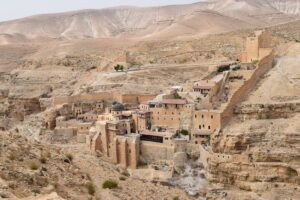 Saint Savva’s Monastery today
Saint Savva’s Monastery today
Included in this section is a chapter about “The Heresy of the Ishmaelites”. And who are they? The Muslims! This is based on the belief, long held by Muslims, Christians and Jews alike, that that the Arabs descended from Abraham through his “illegitimate” son Ishmael. Consider: John was allowed to write his criticisms of Islam from within the jurisdiction of the Caliph of Jerusalem!
Interestingly, he did not consider Islam to be a separate religion, but rather a Christian heresy, saying that Muhammad was influenced by an Arian monk, who convinced him of the reality of the one God, but that Jesus was not the Son of God but only a great prophet. Indeed Muslim theology sounds Arian in a way.
John really “tore into” the Muslims. He described a dialog he had with Muslims – either actual or perhaps more likely it was a literary device.
Among his criticisms: 1 Why do Muslims believe God actually spoke to Muhammad? He received The Koran while he was alone, while The Koran itself requires that marriage and even trade must be done in the presence of witnesses. 2 No prophets predicted the coming of Muhammad, while there are clear prophecies of the coming of the Messiah. 3 Why do Muslims believe Mary was the sister of Moses and Aaron? He also included a defense of Muslim criticisms of Christianity. (It should be added, however, that in light of later history John wasn’t entirely successful in convincing them!)
John wrote many more books which I won’t even mention here.
Have I read all he wrote? No, of course not. I have read much of his defense of the holy icons, and all of his analysis of heresies. He is easy reading, or at least I found him so. Give it a try, if you have the time. You can find much of his basic writing online.
He wrote hymns innumerable. Let’s start with this one, which you may just possibly recognize? Oh, thank you, thank you, John of Damascus!
from Orthodox Christian Chants site
This is only one part of the beloved Paschal Canon, which begins: “It is the Day of Resurrection! Let us be radiant, O people! Pascha! The Lord’s Pascha! For Christ our God has brought us from death to life, and from earth unto heaven, as we sing triumphant hymns!” and which then goes on and on – “an explosion of joy”, as Father Schmemann used to call it.
Saint John also composed the “Octoechos” (Ὀκτώηχος) – pronounced “OcTOekos”, just in case you might want to say it without sounding foolish. If you come to Vespers and Matins (Orthos), which please do, you will encounter them. These are hymns which vary with each day of the week, according to the “theme” of the day (Sunday for the Resurrection, Monday for the Holy Angels, and so on. I think I mentioned this not long ago.) They are called the “Octoechos”, because they also vary according to a weekly cycle of “eight” Tones, as they’re called. That is, First week: Tone One. Second week: Tone Two. And so on. This comprises an enormous volume of short hymns – literally dozens for each day of the week. How many all told? If you want to get an idea, go to: http://st-sergius.org/services.html If you’re not training in Orthodox liturgics, you’ll immediately be lost. Just find some prayers (in English) and pray them for a few minutes.
I have found the Octoechos invaluable in my daily devotions – not that I use all of it. That would take half the morning, when I need to be working on this Blog! They continue to shape this old convert from Protestantism in the Orthodox way, which is a never-ending joy.
To conclude, Saint John was Damascus was a very talented, very holy, very busy man. No wonder he is commemorated by all Christians who honor the blessed saints – and why we Orthodox call him a great Father of the Church, and Roman Catholics title him a Doctor of the Church (which means the same thing).
Sung in Arabic by the Choir of the Monastery of the Theotokos, Balamand, North Lebanon
“Champion of Orthodoxy, teacher of purity and of true worship, the enlightener of the universe and the adornment of hierarchs: all-wise father John, your teachings have gleamed with light upon all things. Intercede before Christ God to save our souls.
Next Week: John of Kronstadt, Russia’s favorite Twentieth Century Saint
Week after next: I’ve been too busy to even think about it, but something will come to mind. It always does.
Dear Father,
Thank you for the wonderful post (much anticipated). As for the icon of the Mother of God “Of the Three Hands” – I found some interesting articles in English that explain the iconography with a direct reference to the story of Saint John Damascus.
https://www.oca.org/saints/lives/2019/06/28/101839-icon-of-the-mother-of-god-of-the-three-hands
This type of icon is very popular in Bulgaria (probably in other Orthodox countries too), a mircaulous and venerated one is preserved in the famous Troyan Monastery:
https://touringbulgaria.wordpress.com/2019/08/18/troyan-monastery/
Greetings,
Valery
Valery, thank you very much for the information. I’ll go back into the Post and ask people to refer to your comment. (I didn’t take the time to research this myself. My wife says I shouldn’t have been in such a hurry to get the Post published, and she’s right.)
But I will never accept an Arab majority government in P*lestine until eternity – knowing their penchant of killing each other.